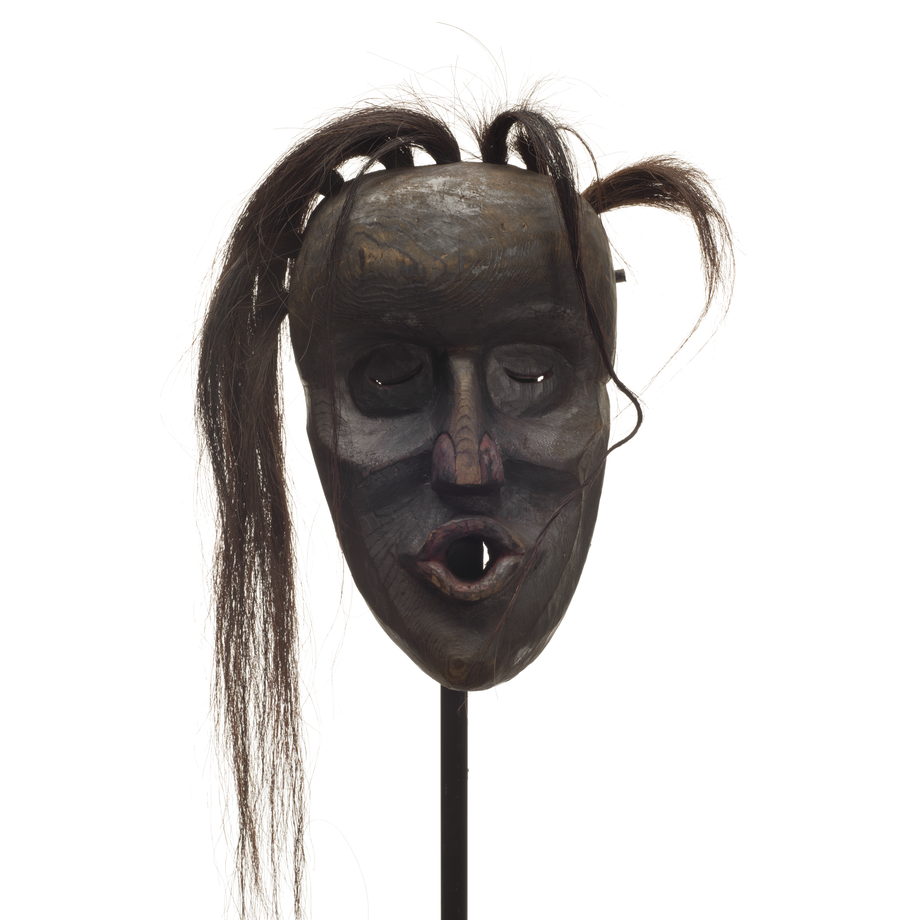Dzunuk´wa
Wild Woman of the Woods
In most Dzunuk´wa legends, this giant of the woods is female, black in colour, with messy hair, exposed breasts and a puckered mouth. She is a terrifying and threatening creature who carries a huge basket on her back into which she puts the mischievous children she captures. Although Dzunuk´wa is a giant, she is easily out-witted by children as she is not so smart and very clumsy.
Owner
T´sandigan ’Nage’, Harry Mountain, Mamalilikala (Village Island)
Dzunuk´wa by Pauline Alfred
Catalogue Information
Provenance
Owned by Harry Mountain until its forced surrender to Indian Agent William Halliday on March 25, 1922. Halliday later displayed and photographed the seized pieces at the Parish Hall in Alert Bay. After doing an inventory, he crated the items in June, and at the end of September he shipped them to Edward Sapir at the National Museum of Man (now the Canadian Museum of History). They remained the property of the NMM until their repatriation by the U’mista and Nuyumbalees Cultural Societies in 1979.
Materials
Wood, Cedar; Paint, Graphite; Paint; Hair, Horse; Metal, Iron; Fibre, Cotton
Dimensions
32.0 cm (without hair)
Accession Number
80.01.027
Physical Description
Dzunuk´wa Wild Woman of the Woods mask carved from one piece of red cedar and painted black graphite (worn at places) and red with natural pigment paints. Lips and nares are painted red. The mask is plain and is small compared to other Dzunukwamł in the Potlatch Collection. It has a bulbous prominent brow that connects to overhanging eyebrows. The nose is quite human-like, while the cheeks and jaw line are very fine and almost skeletal or slender. The eyes are the usual sleepy slit-like eyeholes for the dancer's visibility and the mouth is carved through to utter the sound of the Dzunuk´wa, which is "Huuu!" Eight (originally nine) large tufts of horse hair are inserted into holes in the top of the head. The harness is missing, however there are pairs of nails on the side and top edges, one of which has a strip of cloth attached; these possibly formed the original harness attachments.
